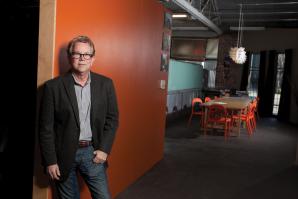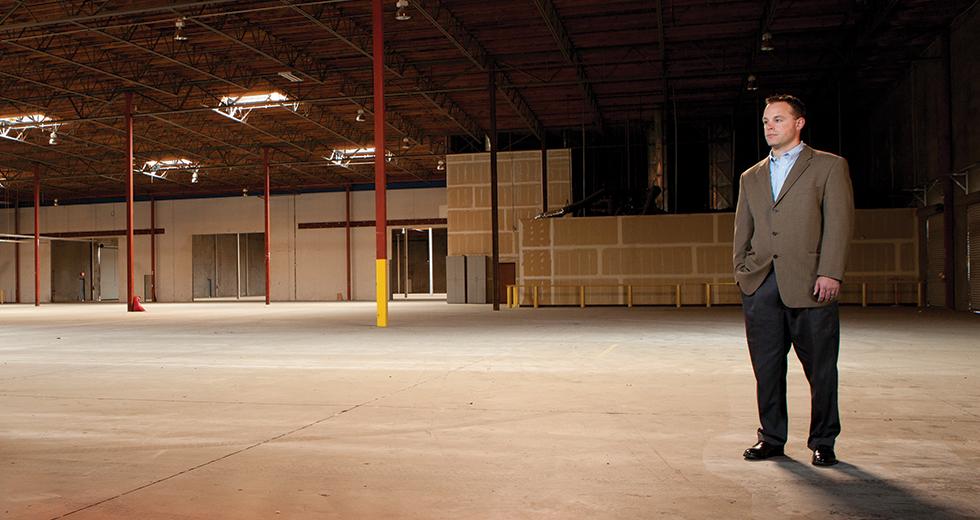The Capital Region’s industrial real estate market is bouncing along the bottom, but local brokers are cautiously optimistic that signs are pointing to a steady, albeit slow, recovery this year.
With vacancy rate estimates of 12 percent to 13 percent, demand for industrial space is seeing increased activity. There is very little construction, but the market is ripe with low lease rates and sales prices.
“Companies can go out now and drive some pretty good bargains, whether they’re buying something for their company or renewing their lease,” says Peter Winterling, senior vice president at Cornish & Carey Commercial Newmark Knight Frank. “There’s a little bit of renewed optimism. Our phones are starting to ring.”
As proof, industrial brokers point to last year’s positive net absorption of space for the first time since 2007. Topping the list of major lease transactions in 2011 was CEVA Freight’s December leasing of 321,651 square feet on Younger Creek Drive in the Power Inn area.
Last year’s few large deals, however, mask the reality that 72 percent of leases signed were renewals, relocations or expansions, rather than new tenants entering the market, a report from Jones Lang LaSalle shows.
“As we lease up space, we generally have a lot of space freed up, and then we have to go and backfill,” says Ken Reiff, managing partner at Cassidy Turley.
There is, nonetheless, a general uptick in activity overall, both from tenants and buyers. Michael Luca, vice president at CB Richard Ellis Inc., points out that his company has twice as many deals in escrow as it did at this time last year. Jones Lang LaSalle is tracking 4 million square feet of prospects in the greater Sacramento area.
Many of those prospects could simply be gathering information to renegotiate current leases, but it still represents activity, something the market saw little of in 2008 and 2009, says John Fondale, a senior vice president with Cornish & Carey.
Fondale says companies that stayed in business are looking at their leases and asking, “Am I in the right number of square feet? Can I decrease my rent?” The answer in most cases is yes, considering that the average asking price for rent in Sacramento in 2007 was about 47 cents per square foot and has declined since, Cassidy Turley figures show. In 2011, the average was closer to 36 cents per square foot for a triple-net lease, in which the tenant pays for taxes, insurance and building maintenance.
The result is a market that heavily favors tenants. “Landlords are typically trying to work with tenants because they know if they lose them, it could be difficult to backfill,” says Bob Keady, vice president at Voit Real Estate Services.
“The tenants that are out looking around are finding a lot of choices and very good rents,” Winterling says.
Mark Demetre, managing director of the industrial division at Jones Lang LaSalle, predicts a shift late in 2012. “The word is out that conditions are improving, so landlords aren’t as [adamant about] wanting to make long-term leases,” he says. Shorter-term lease deals are available.
Reiff says he expects rental rates generally to stay flat this year. Given a slowly dropping vacancy rate, landlords will hold to their asking price and limit common concessions, such as months of free rent. “We’ve been advising tenants to go out and lock in deals,” Reiff says. Market equilibrium is considered to be about a 10 percent vacancy rate, and rental rates likely won’t fall significantly until the market hits or dips below equilibrium.
The low rental rates help the region’s existing companies as well as firms looking to relocate into the Capital Region. Bob Burris, senior vice president with the Sacramento Area Commerce & Trade Organization, says his group is tracking more outside companies interested in commercial space now than it has in the recent past, though only a small percentage ultimately will move here.
Burris says more than half the companies SACTO is tracking are looking for industrial space. Most seek leases on existing buildings, and many are companies looking to enter the region.
Foreign capital also has increased, and almost one in four companies SACTO tracks are based overseas. That’s up from single digits just five or six years ago, Burris says. More than half of all current prospects come from two industries: clean technology and biotechnology.
“We’ve been advising tenants to go out and lock in deals.”
Ken Reiff, managing partner, Cassidy Turley
The current market also presents opportunities for companies looking to purchase their own buildings. Demetre is working with an asphalt company interested in buying a 12,000-square-foot building in the Power Inn area. With low interest rates on a Small Business Administration loan and the ability to put 10 percent down, the company could end up with a monthly debt service 60 percent of its current rent.
“It’s a good time to be a tenant and a better time to be an owner/occupier,” Demetre says. “If they’ve got the cash to buy, it’s a good time.”
Consider the numbers compiled by Cassidy Turley: The average cost per square foot of industrial space in 2007 was $97 a year. Last year, it was $50.
Investors are noticing such prices. The Buzz Oates Group of Cos., for example, is buying, says Vice President Zac Sweet, and in December closed on a 100,000-square-foot warehouse formerly occupied by Lumber Products. The group paid $3.25 million for the warehouse at 59 88th St. that offers rail access, heavy power and a good docking area, Sweet says.
The goal is to have the building leased by the end of the year, he says, and already the property has “some pretty good activity on it” with a number of potential tenants touring the space.
“We think there’s pretty good potential upside over the next couple of years,” Sweet says. “We think it was a good, educated risk that we’re taking.”
The region also is attracting attention from investors outside the area. San Francisco-based FJM Investments, for example, has purchased three properties within the year, most recently a group of six buildings in El Dorado Hills that total about 60,000 square feet, says Winterling, who represented FJM on the transaction.
FJM paid about $44 per square foot for the buildings, which had been bank owned. About six years old, the buildings need only minimal work, primarily deferred maintenance and perhaps the addition of some offices, Winterling says. When FJM closed on the property in December, it was about 37 percent occupied. Six weeks later it was 50 percent occupied.
Though FJM is no stranger to Sacramento’s industrial offerings — it first purchased here in 2003 — its recent interest has been spurred by the market’s dramatic drop.
“The Sacramento market is very out of favor, so we think it’s a good time to buy when other people are wary,” says FJM Partner Michael Joseph.
Of course, key to the company taking that risk, Joseph says, is buying at a good basis that allows FJM to hold on as the market recovers. All three of FJM’s recent purchases were bank owned, and for all three the company paid cash.
“I don’t think anyone’s good enough to predict when the economy is going to turn,” Joseph says. “If it’s in the next 12 or 18 months, then great. But if it’s in three or five or seven years, we want to be in a position where we can hold on. But if it’s going to be that long, you have to buy at a price that allows you to still make money and wait.”
Those are precisely the types of investment purchases brokers are seeing. Sharp investors are circling and making offers on distressed properties, Winterling says. “The people who have money are looking at Sacramento,” he says.
Challenges remain. Because of the low rents, for example, some tenants who had been in class B and C buildings were able to upgrade to class A facilities. Those shifts might ultimately lead to a lack of class A options for tenants who truly need them, says Demetre. That could boost demand — and rental rates — for remaining class A space. But for now, “Unless someone comes in looking for specific buildings, something customized, we can probably fit them into the marketplace right now,” Reiff says.
That also means there is virtually no speculative construction in the market these days. Even if the land were free, Fondale says, the cost of construction would be far higher than what could be charged for rent.
“There’s still a large gap between where the prices are today and where they need to get before we have speculative development,” Demetre says. The only construction happening now is tenant-driven, and even that is typically only happening when a company has specialized needs or wants to expand its current facility.
Local brokers nonetheless are focusing on the positive aspects of the market, from last year’s positive net absorption to the opportunities for tenants and buyers. From here, they say, there’s nowhere but up.
“We’ve hit the bottom,” Reiff says. “We’re just bouncing along, and I don’t see things going any lower. We’ve gone through the worst.”
Recommended For You

Commercial Lending Forecast
Softening standards with a chance of loans
This year could provide some of the first expansions in bank lending since 2008. So is the market back up to speed? No. But banks are slowly and smartly increasing their appetites for commercial lending, and the Capital Region will see its share of transactions.

Rebuilding Blocks
New strategies for post-recession architects
Bruce Monighan knows a few things about building something out of nothing. Facing the option of unemployment or bootstrapping, the local architect started his Sacramento-based firm Monighandesign from scratch in 1982. By the early 2000s, Monighandesign was completing between 50 and 60 public and private projects annually in markets across the country and looked to expand in 2007.



